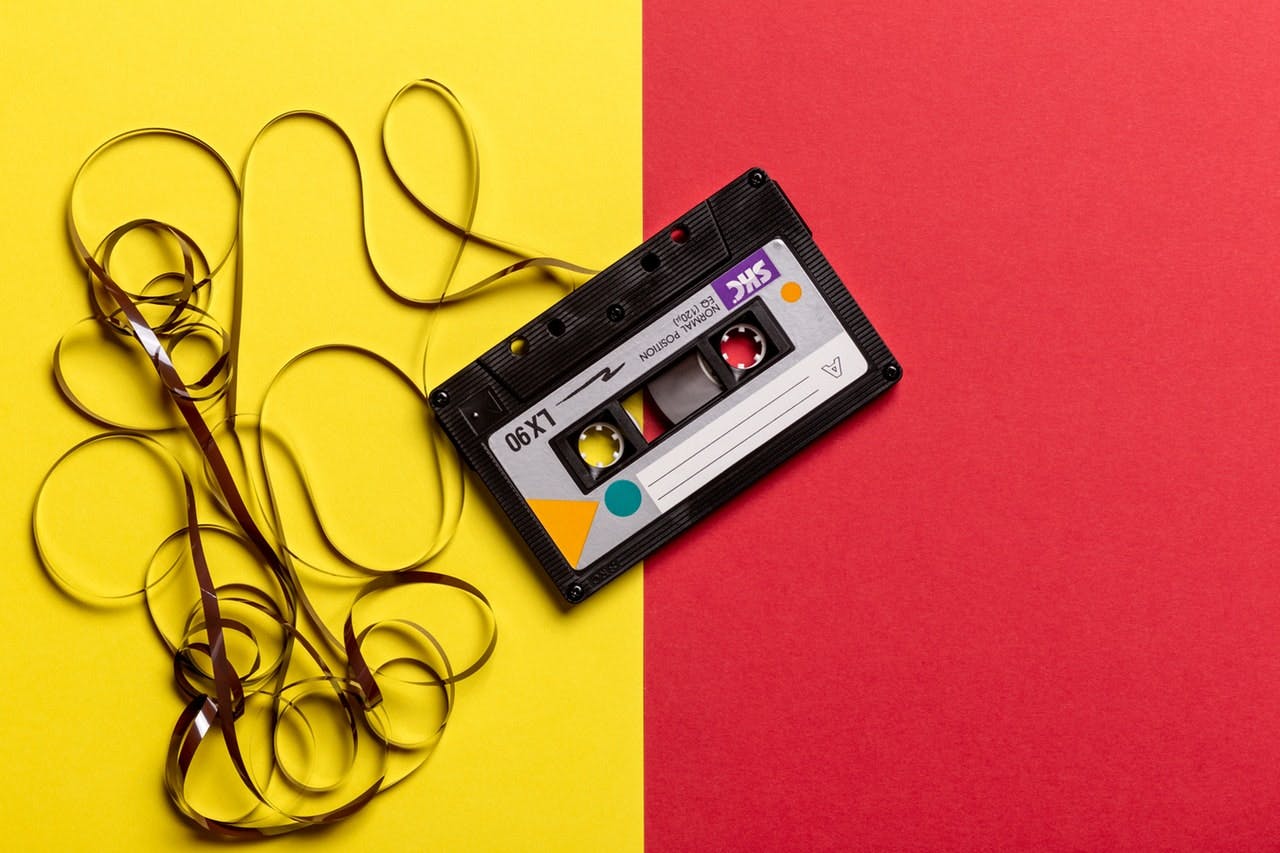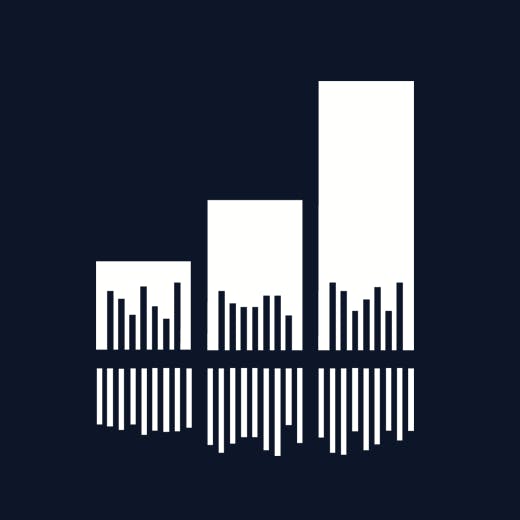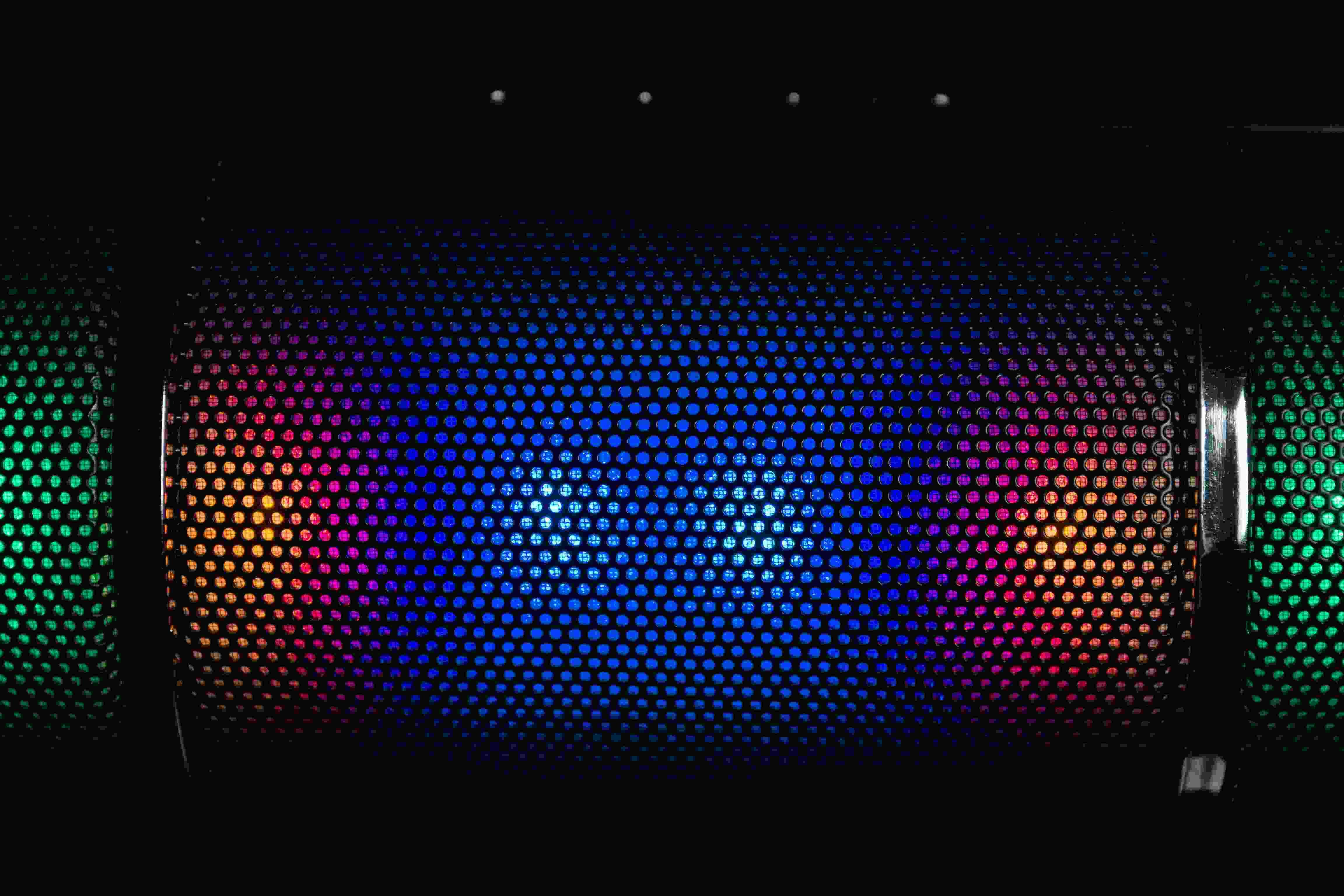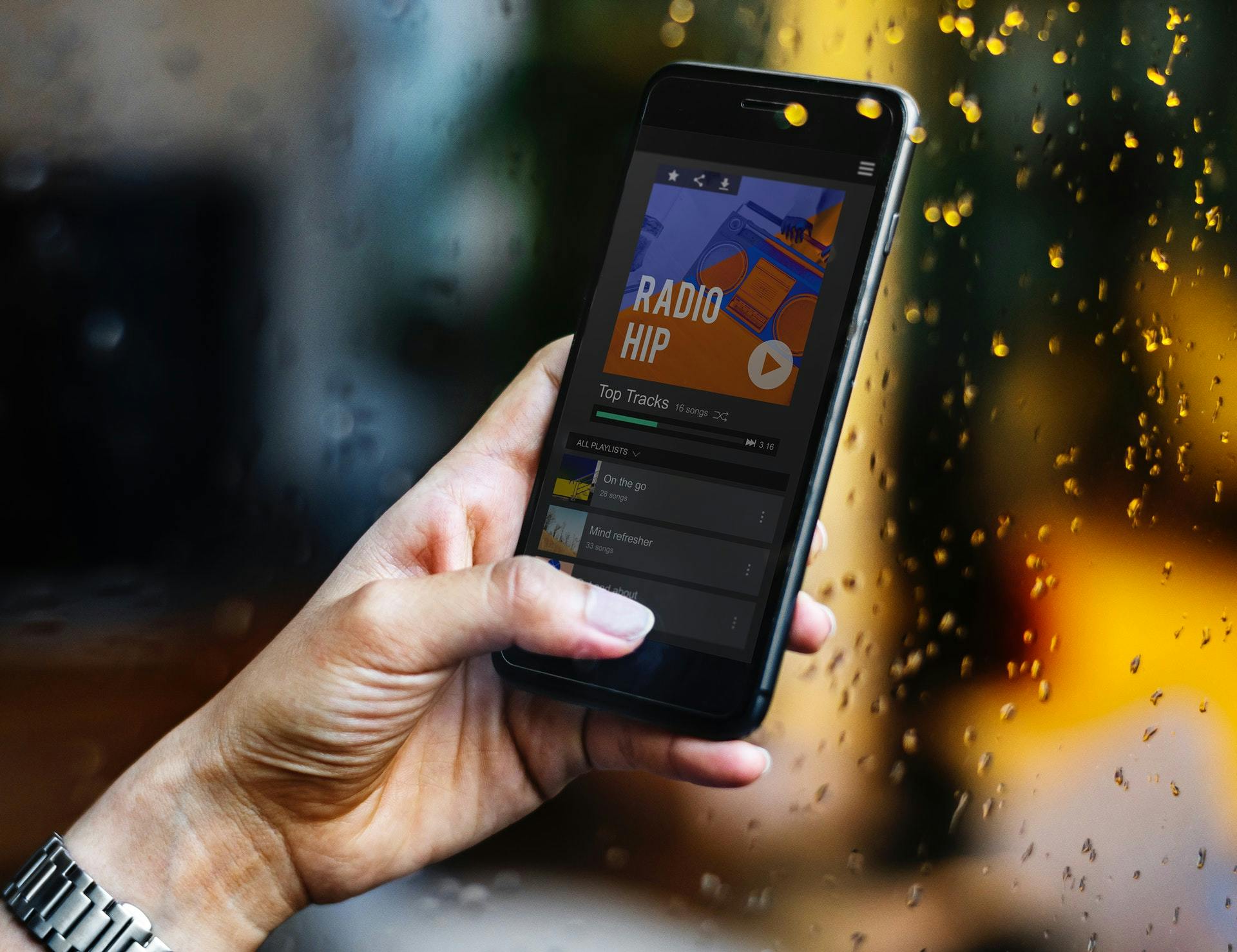Jump to
- Why analytics are more important than ever?
- Types of music analytics data
- 1. First-party streaming data & built-in social media analytics tools
- 2. Distributor’s Dashboard: DSP data aggregation
- 3. Cross-channel data analytics: all-in-one solutions
- 4. Social media and web-mentions tracking: complementary tools
- 7 essential analytics tools for music professionals
- 1. Spotify, Apple Music, Bandcamp for Artists, etc.
- 2. Pandora's AMP - Artist Marketing Platform (formerly Next Big Sound)
- 3.Youtube Studio
- 4. Your Distributor’s Dashboard
- 5. Soundcharts
- 6. Chartmetric
- 7. Awario
- How do music pros use analytics?
- 1. Artist promotion and management
- 2. Live music industry
- 3. A&Rs
A seemingly endless number of streaming, social media, and digital radio platforms are now at the core of the music business. The digital environment has given artists new platforms to promote their music, connect with the fans and, ultimately, grow their careers.
The flip side: it’s difficult to track your performance across all of the platforms and mediums available. The music industry produces millions of data points every second — and we’ve created Soundcharts to monitor, structure, and organize that information; to make it clear and actionable for everyone in the industry. However, we are not the only ones. There are numerous tools that music professionals use to navigate the business.
The typical music analytics toolkit includes a range of platform-specific and aggregate data solutions. Some of these tools will give you a snapshot of specific areas of an artist’s career. Others will provide a broader view covering multiple channels.
A modern music analytics stack has to cover both global and local markets, and feature “analog mediums” like radio airplay as well as the data from all the different digital platforms — and building one is a challenging task. That’s why we’ve put together this guide. Learn about the best music analytics tools, which platforms and mediums they cover, how they complement each other, and how the music professionals use them to build and develop careers.
Why analytics are more important than ever?
The last 20 years have seen rapid shifts in the music distribution chain. From the physical formats in the 90s to the digital piracy of the 2000s, to the current music streaming paradigm, the music business was turned on its head over and over again. Now, we've reached the age of abundance, where listeners have hundreds of platforms and mediums to choose from — more than ever before.
Those new platforms and mediums have created unique opportunities for artists and music pros: where you once had to focus on the local markets one at a time, you can now connect with audiences and listeners across the globe. But identifying these opportunities is no small feat. With 99,000 new songs released each day, how do you cut through the clutter?
Music professionals need to be agile: test and experiment, develop new solutions, and learn on the fly. To do that, you need to be able to assess the impact of your decisions in real-time — and so a well-rounded music data analytics stack becomes the key to success in the modern music business.
Types of music analytics data
1. First-party streaming data & built-in social media analytics tools
These are the build-in data tools provided by major streaming services. Such tools contain critical insights that you can’t find anywhere else (even on your distributor’s dashboard) on the artist’s audience’s demographics, location, and much more. The downside: first-party streaming data is platform-specific.
Similarly, every social media platform will provide some kind of built-in analytics tool. Like the proprietary DSP analytics, they offer a snapshot of your performance within a single platform. It’s the info that you will need if you’d want to get into details — and that’s the info you can’t get elsewhere. However, its value is limited without a larger stack that draws in data from other platforms.
2. Distributor’s Dashboard: DSP data aggregation
A distributor’s dashboard provides a broader overview of an artist’s performance. Nearly every distributor has a dashboard that summarizes data across streaming platforms and digital storefronts for a comprehensive view of performance throughout the digital distribution network.
3. Cross-channel data analytics: all-in-one solutions
A cross-channel music data analytics solutions will collect data from all the different platforms and mediums to form a single, streamlined overview of an artist’s career. Compiling this data takes time and skill in knowing where to find the right, clean information, how to capitalize on it, and how to turn it into actionable insights.
4. Social media and web-mentions tracking: complementary tools
Social media are perhaps the most important component of any music marketing campaign. However, while the first-party data tools provide an in-depth view of social media metrics, there still are crucial data points that escape their attention. We now live in the viral era, where user-generated content can turn an unknown artist into a global sensation in a matter of days, and, well — not all of the UGC lives on the artist’s social pages. That’s why any truly comprehensive analytics stack will also include tools that would allow tracking web and social media mentions.
7 essential analytics tools for music professionals
Now that you know the main groups of analytic tools let’s look at some of the best solutions in each of the categories. Here’s the analytics stack that will cover every dimension of an artist’s career; every single market, platform, and medium.
1. Spotify, Apple Music, Bandcamp for Artists, etc.
Scope: Only your data
Data: Spotify, Apple Music, and Bandcamp for Artists provide platform-specific, real-time, first-party data on critical metrics like:
- Number of followers/listeners
- Number of streams, saves, and favorites
- Number of playlists additions
- Audience demographics and location
Essence and use: The proprietary data analytics platforms of the major DSPs are the only place where you can get the original first-hand data on the artist’s performance. You need this deep-data to zoom in on the details, though a bigger stack is required for a complete overview of your career. Here, the tool that you will use the most will depend on the focus of your distribution strategy: Spotify for Artists in not better or worse than Bandcamp for Artist — it all depends on where your fans get your music.
Additionally, Spotify launched Spotify for Publishing. While Spotify for Artists is a more granular view, Spotify for Publishing is intended to fit the needs of publishers who want to track their portfolio of artists and tracks across Spotify’s ecosystem.
2. Pandora's AMP - Artist Marketing Platform (formerly Next Big Sound)
Scope: Top-layer data on the music industry with first-party Pandora data
Data: Pandora AMP is the evolution of Next Big Sound, fully integrated into Pandora’s Artist Marketing Platform. It provides first-party data on:
- Pandora stream-counts
- Playlist and discovery insights
- Audience demographics and location
- User engagement metrics
Essence and use: Pandora AMP continues the legacy of Next Big Sound by offering detailed analytics on Pandora’s platform, helping artists and managers understand how their music performs, who is engaging with it, and where opportunities lie. While it includes some aggregated third-party data from platforms like X, Facebook, Wikipedia, and Songkick, its focus remains on Pandora-specific insights.
Since Pandora is primarily U.S.-focused, AMP is invaluable for artists targeting the U.S. market but is not a global, cross-platform solution. For international or multi-platform insights, other analytics tools such as Soundcharts or Chartmetric are required.
3.Youtube Studio
Scope: Only your data
Data: YouTube Studio provides first-party data on
- Deep, real-time video-consumption metrics
- YouTube audience’s demographics and psychographics
- Overview of recommendation and discovery on the platform
Essence and use: YouTube is one of the biggest streaming platforms in the world — according to Fabio Duarte, up to 9% of all streaming subscribers are on the platform. Furthermore, YouTube will inevitably be at the center of your video-content promotion strategy. Youtube Studio does a great job of crunching the numbers, and it is an essential tool to assess your video strategy. Though, again, YouTube Studio only provides partial (although in-depth) platform-specific data.
4. Your Distributor’s Dashboard
Scope: Only your data
Data: Unlike the platform-specific tools above, the dashboard used by your distributor aggregates data across DSPs and digital storefronts. While the specifics vary depending on the distributor, this will typically include:
- Streams and sales
- Audience demographics and location
- Playlists additions (not always)
Essence and use: While a distributor’s dashboard gives a more comprehensive view than the platform-specific tools listed above, it’s still only partial data. These dashboards are designed by distributors to report sales, and so they are good at providing an overview of your digital store performance. However, while the sales (or streams) are the target metrics for most artists, they have limited potential if you want to get a complete picture of the artist’s career. For any artist out there, sales figures are not enough — you need to know how the fans get to the store, how, where and when they connect with.
5. Soundcharts
The chances are that you’re reading this text on the Soundcharts blog, so there’s no point in hiding it. This is our platform. We are very proud of it — even though we know that it’s just the beginning. We are inevitably biased, but we really think that Soundcharts is an essential part of any music analytics toolkit.
Scope: Data across the entire music industry
Data: Soundcharts is an all-in-one tool that provides complete, real-time data, covering every area of an artist’s career: from social media and streaming to radio airplay. Soundcharts’ data includes:
- Audience across all major social media and streaming services
- Playlist data, covering Spotify, Apple Music, and Deezer
- Localized data on Spotify and YouTube consumption
- Airplay tracking from over 2400+ major FM/AM radio stations across the globe
- Digital Platforms and Airplay Charts
- Venues and events
Essence and use: Soundcharts won’t give you the deep level first-party data that you can get with platform-specific tools. Instead, the platform aims to provide you with a complete view of the artist’s performance — for any artist out there.
With Soundcharts, you get an actionable report, covering most sides of the artist’s career: from social media to digital consumption metrics to localized airplay stats. In that sense, Soundcharts is a centerpiece of your music analytics stack: a single dashboard drawing data across dozens of channels, that you can use to assess promotion campaigns, keep track of artists’ all-around performance, identify local opportunities and pinpoint industry trends.
The platform still have a couple of blind spots, like TV & Movie Synch or Amazon Music data. However, the data that is on Soundcharts is accurate, well-organized, updated in real-time and clear metadata-wise — which makes the platform our first choice (duh) when it comes to cross-channel data tools.
The cherry on the cake: Soundcharts is also a team workspace, which means that you can share your access with all your colleagues and partners. Honestly, we could go on about our features for hours — but it’s probably best if you check it out for yourself.
6. Chartmetric
Scope: Data across the entire music industry
Data: Chartmetric provides aggregate data collected across the music industry, including:
- Social media audience data
- Audience and playlist data, covering all major streaming platforms
- Airplay data, covering 1500 stations across the globe
- Digital platforms charts
Essence and use: Quite like Soundcharts, Chartmetric collects and processes cross-channel data across the digital space, from social media audience to digital platforms’ playlist data. The platform’s strong suit is the quantity of data it collects — it will provide you with a detailed cross-channel report, full of the custom metrics, graphs and charts.
The platform can offer solid insights: for example, Chartmetric has quite an interesting take on Spotify playlist analysis, suggesting similar playlists to highlight pitching opportunities. However, the quantity of data on the platform and the way it’s organized can sometimes be overwhelming, obscuring the view and making it difficult to grasp the full picture. The music industry is a place when you need to make smart decisions — and make them fast. That sometimes means that you won’t have the time to study all the metrics, tabs and data-views available on Chartmetric, especially given the fact that the load performance of the platform can get a bit irritating.
Another weak point of the platform is the lack of localized “analog” data. The platform does a great job at collecting data across the digital space and integrating third-party insights of TuneFind, TVMaze and like. However, the airplay data on Chartmetric covers only 300 U.S.-based radio stations tracked by Radiowave — and that lack of local insight limits the platform’s overall functionality.
7. Awario
Scope: Anything you want to track
Data: Awario is a mention-tracking platform that lets you monitor:
- Social media and web-mentions
- Viral Reach and Location
- Semantic analysis: mentions’ tone and mood, topic cloud
Essence and use: Awario is not an industry-specific tool, yet its mentions-tracking functionality can prove to be of great value to the music professionals. Awario is useful for two primary things: assessing viral effect across the wide web and social media platforms and determining the impact of PR campaigns. However, Awario places strict limits on the keywords you can track, which limits its A&R potential.
How do music pros use analytics?
It’s well and good to know all the different tools . . . But how are they actually used? Here are three primary use cases that we’ve found by working with music professionals at Soundcharts.
1. Artist promotion and management
Real-time data and analytics are critical to making overall assessments of the health of an artist’s career. Analytics also helps you identify local opportunities, find high-potential markets, and determine the impact of marketing investments. Here’s where the timing and accuracy of the insights play a critical role.
In today’s music industry, you need to act fast and be sure that you can trust the data. Let’s say that your music is getting significant radio support in Italy and the audience loves it. The market can be a massive opportunity, but to make the best of it you might need to find a local promotion team, build up regional PR strategy, make changes to your tour route, pitch to local promoters and so on. All of that takes time — and even a single day of delay can become crucial.
Aside from identifying the opportunities, artists and music pros use their data analytics toolkit to support pitches to executives, booking agents, and promoters. Any music career is built on collaboration, and establishing partnerships takes convincing, so having concrete data behind your pitch is a game-changer.
2. Live music industry
Booking agents, promoters, and festival programmers use the same data to identify opportunities on the opposite side of the music business. Success in the live industry is centered on region-specific insights — the live show is the only part of the music business that is focused on the local markets.
For booking agents, for example, the holy grail is to estimate the optimal venue capacity for an artist X in a city Y. Even with the most developed analytics stack, there would be a lot of gut feeling that goes into it — after all, the venue has to be booked 9-10 month in advance. However, the localized data insights can turn that estimation from an educated guess into a data-driven decision.
3. A&Rs
The goal of A&R is simple: find and sign the talent before anyone else does. A&R reps used to go out to shows to hunt talent. Now, the digital space has taken over — and social media are the home of up-and-coming acts. Focus on digital platforms have created a whole new way for talent hunters to assess the developing talent, and music analytics tools are central to taking advantage of these opportunities. A&R reps used to study the crowd at the live shows. Now, they use analytics tools to get deep insights and find promising, undiscovered acts.
First-party data tools like Spotify for Artist are only available to artists themselves, so A&R scouts need cross-platform tools like Next Big Sound, Soundcharts or Chartmetric, that provide access to data across the entire music industry.



